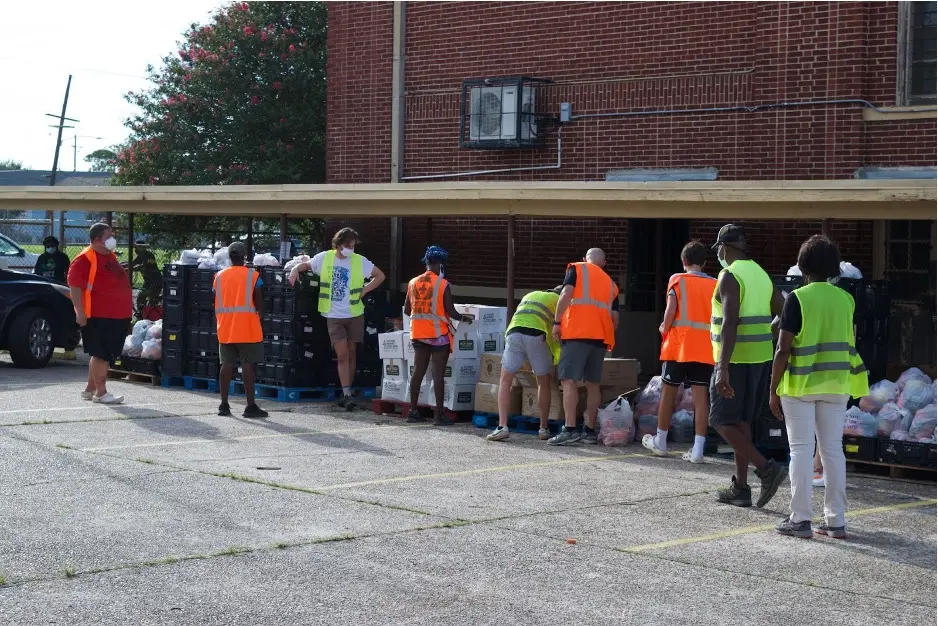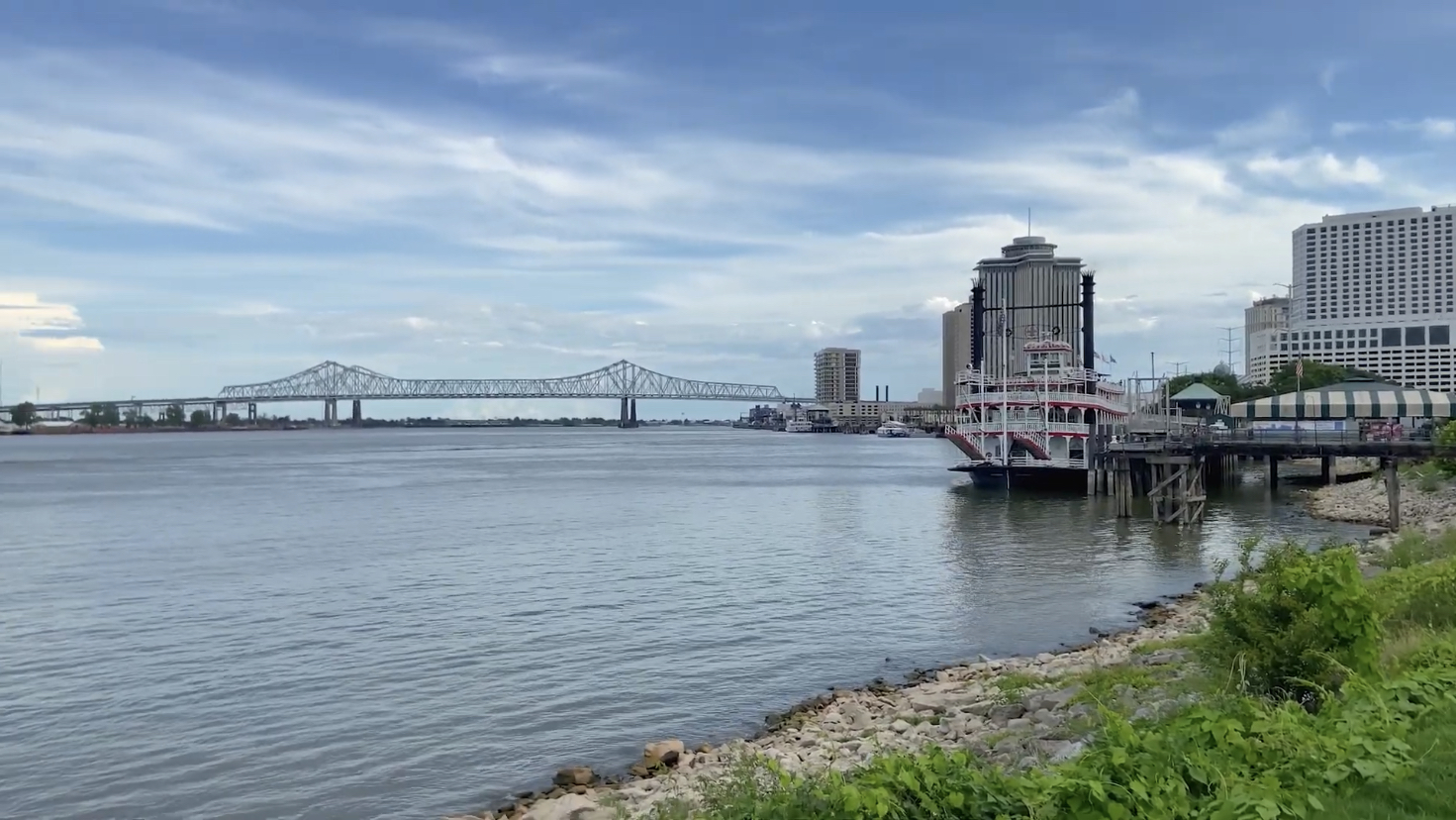
As soon as I arrive, it begins to pour. I feel the thunder rumble on the shuttle floor en route to where I am staying. The driver tells me this is normal; almost every day for about a half hour to an hour, New Orleans experiences roaring rainstorms, a chilling reminder that the city is in the midst of its hurricane season. He assures me that it will calm down soon enough. A purple bolt appears in the sky right after he says that. I have always possessed a fear of thunder and lightning ever since I was little. Nevertheless, when faced with this relentless tempest, an enormous sense of equanimity fills me because I adore this city and know I have come here with a goal I will accomplish.
The last time I visited New Orleans was in January 2019. After entering a contest to see the Saints play in the NFC Divisional Round, I was miraculously selected. My dad and I landed early Sunday morning, watched the game in the afternoon, and flew back home that night. Despite enjoying my first taste of New Orleans, it was short-lived. I was sure I would return eventually, but I did not know precisely when. However, I did know that once the opportunity presented itself, I would be of service to the city in any way that I could. Three years later, in July of 2022, that opportunity emerged.
I now find myself in New Orleans for a second time, but I am unaccompanied; this is the first time I have ever traveled alone. No parents, no chaperones, no classmates. Just me and New Orleans. I could not be happier. It feels incredibly liberating to be on my own exploring a familiar yet unfamiliar city. I am in New Orleans, filming a documentary on the substantial food insecurity crisis afflicting many of its residents across several wards. Functioning as a one-person band, I am scheduling and conducting interviews, not to mention transporting, assembling, and disassembling film equipment. Notwithstanding the humidity, I am having an absolute blast.
I am ready to interview Ellie and Scott, two leadership members for Culture Aid NOLA (CAN), a nonprofit organization committed to distributing food to underserved New Orleanians through a no-barrier, no-stigma approach. I am at Our Lady Star of the Sea, a nearby Catholic Church in the St. Roch neighborhood of New Orleans. This is the location where food is distributed every Wednesday at 6:00pm.
We will shoot the interview in a small warehouse beside the church. I immediately notice that the setting is rather echoey. In an effort to minimize reverberation, I ask Ellie and Scott to sit close to a large curtain. Having them positioned near this curtain lets their voices get absorbed, thereby countering the echo. This move was a split-time decision on my behalf as a filmmaker, and I am proud of myself for how I was able to adapt swiftly to the circumstances.
Following the interview, I shoot b-roll footage of volunteers preparing the bags of food for distribution. I had previously volunteered at Culture Aid NOLA’s other site, Corpus Christi Church, where food is distributed every Saturday at 9:00am. Making the bags of food ready to give out is relatively expeditious. Some volunteers are in charge of adding an item to the bag and passing it down a long table to the next volunteer. This conveyor belt of supplies is constantly being fed as more volunteers break down pallets of food and place the goods on the table. It takes two hours to prepare the bags that will go on to be distributed to approximately 350 families.
A line of cars begins to fill the street alongside the church while several pedestrians fill the sidewalk. Once distribution starts, some volunteers direct traffic and guide vehicles to the distribution station. Drivers are asked to open their trunks or rear door so that volunteers can place the bags in their cars. At the same time, volunteers are helping to give out food to pedestrians on the sidewalk. Tickets reflecting the number of bags distributed are assigned to residents to track how many bags remain.
The hardest part of documenting this experience is witnessing volunteers having to turn residents away because there is no more food left to distribute that day. As I was recording the b-roll of the volunteers cleaning up, I was approached by someone who asked me if there was more food to give out. I relayed the message that the food had already been distributed; the person then nodded and walked away. It hurt me to my core that I had to tell this individual, who had their child with them, that we were all out of food.
Before I left for the day, I spoke to a volunteer named Charles and asked him what the work done by Culture Aid NOLA meant to him. “I used to be one of the people who drove through the line to collect the food,” he said. “After I realized that I didn’t need it as much as others, I started volunteering, and I’ve been doing this now for at least six months. And to be honest with you, it’s a lot more rewarding on this side… I enjoy it.”
Charles also said that he thinks a lack of information is one of New Orleans’ most significant issues regarding food insecurity. “Most people, for whatever reason, don’t have access to the information that’s available, and as neighbors, I think it’s our responsibility to at least try and share, educate, and present folks with all the different food options that are available, and Culture [Aid] NOLA is one of those," he said. "Actually, I think right now it’s the only one that I’m aware of that is really showing interest in feeding the folks in the city.”








